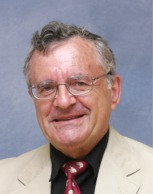Aging: A Differential Calculus Approach
By Shlomo Maital

Warning: This blog uses differential calculus (derivatives) to explain the aging process.
Let X be ‘perceived wellbeing’ at any given age. Then: dX/dt is the change in perceived wellbeing over time.
- Youthful glee. For the young, dX/dt is positive, and d2X/dt2 is also positive. Wellbeing is rising, at an increasingly more rapid rate. The world is your plum or your oyster
- Maturity. dX/dt is still positive, but d2X/dt2 is negative, Wellbeing is rising, but at a slower and slower rate. Burdens and responsibilities temper fun. When d2X/dt2 switches from positive to negative, you are at an inflection point. Wellbeing shifts from rising at a faster rate, to rising at a slower and slower rate… until….!
- Later maturity. dX/dt becomes zero. Wellbeing is thus at a maximum. You’re reached your peak. Perceived wellbeing is maxed out.
- Early old age: dX/dt is negative. Wellbeing is declining. Health problems, money problems, and others. At this point: you enjoy what you have, and work so that the slippery slope doesn’t become TOO slippery. Just – don’t let it get any worse, you hope. But… it sort of does, though not too fast… until
- Later old age. Ah, well. d2X/dt2 is seriously negative. That old slippery slope is really slippery.
But remember: it is ‘perceived wellbeing’. You do have some control. Enjoy the little things. Like a glass of great wine, or single malt.
And one final word.
Since when do mathematicians know anything about growing old? It’s all just Greek to us.
Infinitesimal calculus was developed in the late 17th century by Isaac Newton and Gottfried Wilhelm Leibniz independently of each other Newton died at age 84, famous and well off, and was buried in Westminster Abbey. Leibniz died at age 70 – but was one of the world’s most renowned thinkers, making seminal contributions to philosophy, theology, ethics, politics, law, history and philology.
I kind of doubt that d2X/dt2 became that negative for either.


Leave a comment
Comments feed for this article